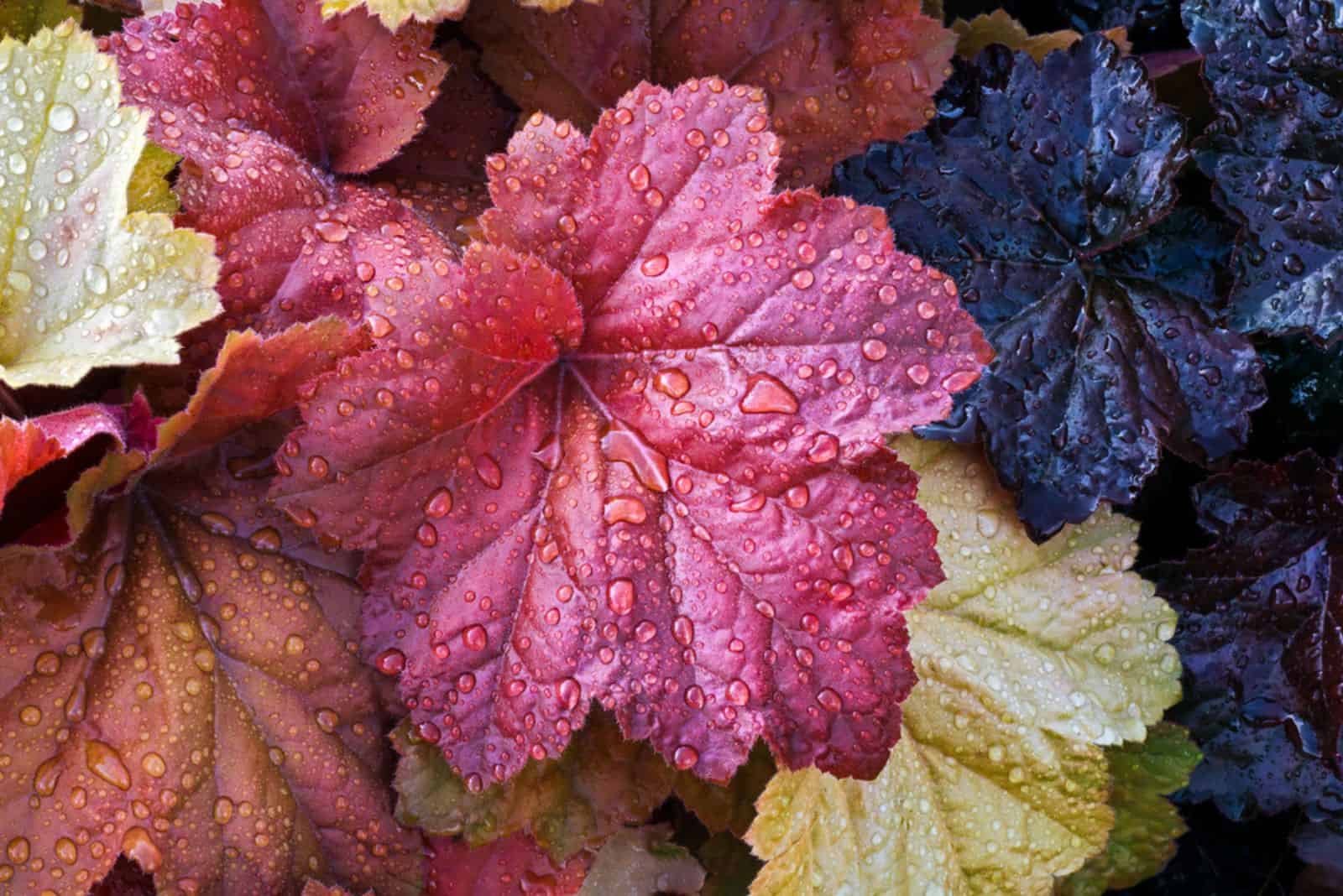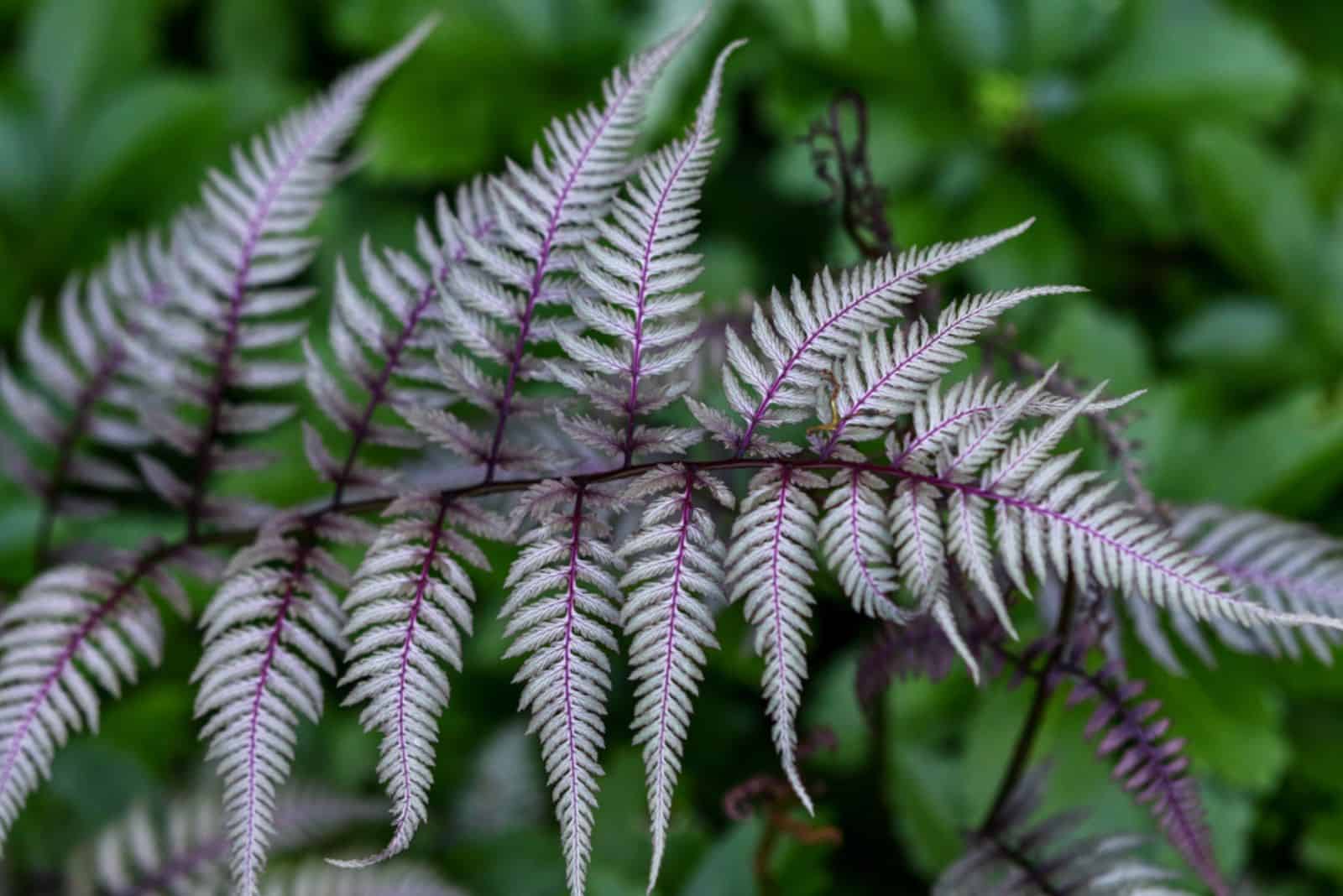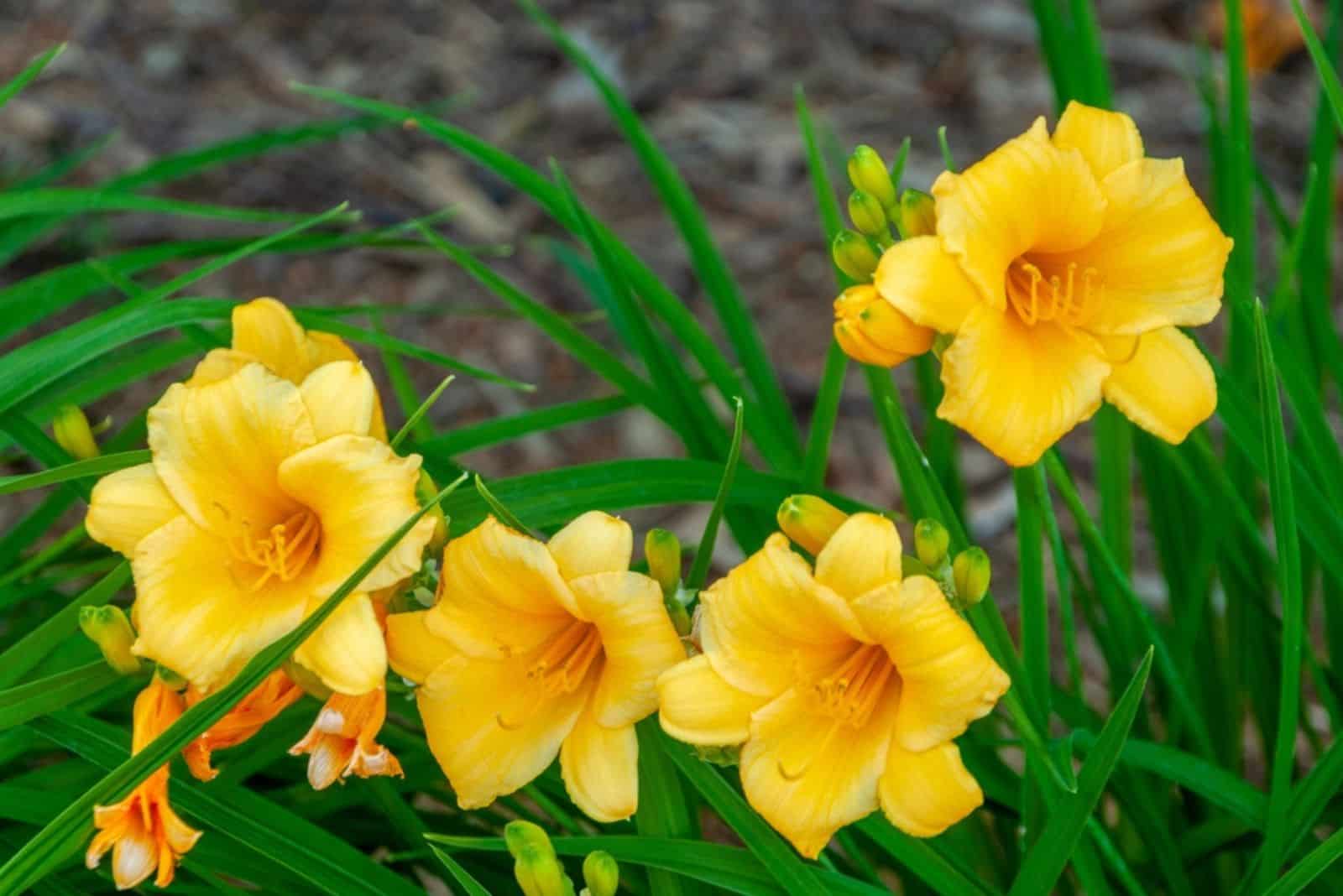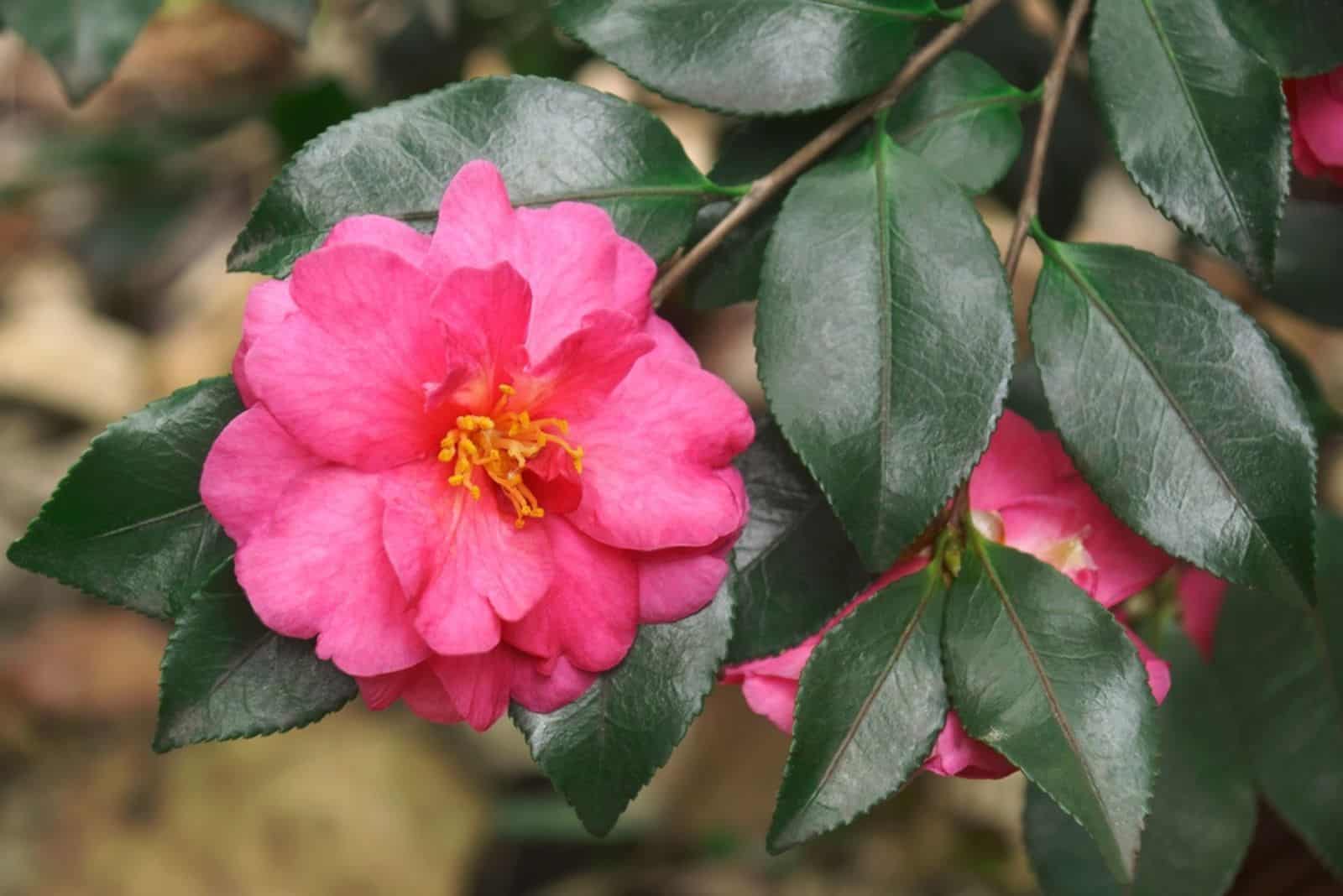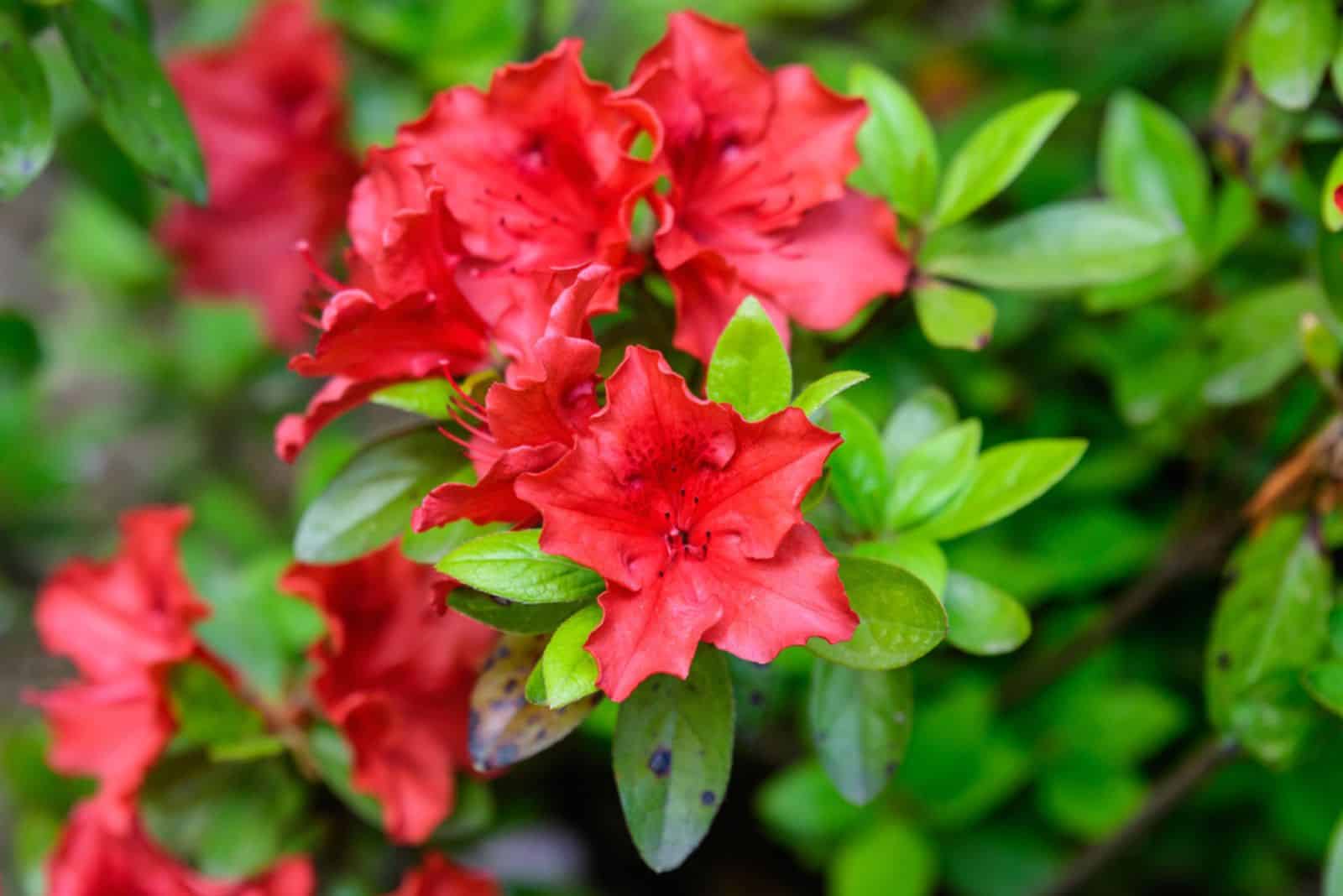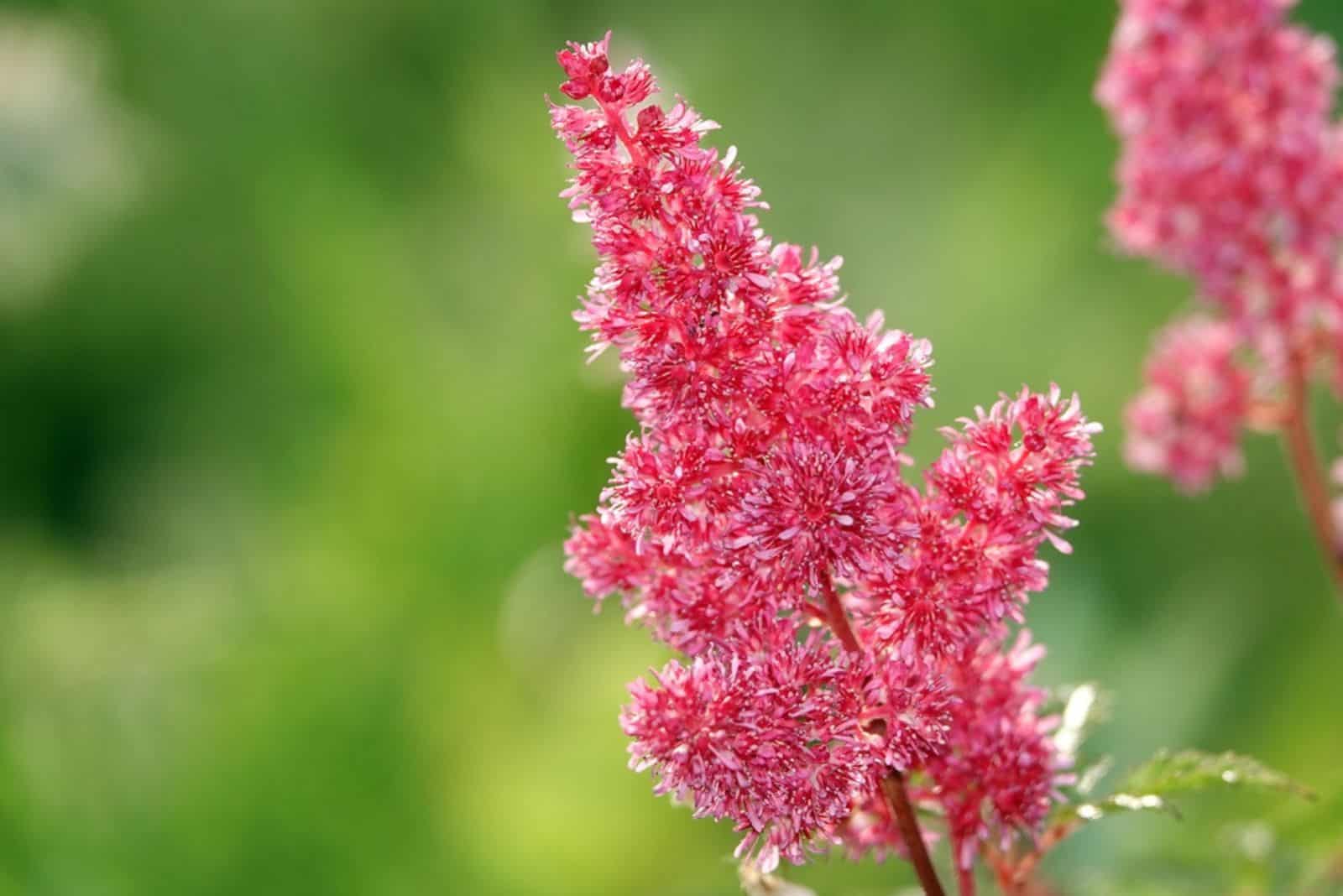Gardeners adore the colorful foliage of coral bells, so it’s no wonder there are new varieties on the market every year.
If you decide on growing these beauties, or already have some in your garden, there’s one excellent technique you should employ: companion planting.
By using this method, you’ll be able to grow many plants together to save space and get a more beautiful color display. Some plant species thrive in similar environments as heucheras, aka coral bells, so they’ll get along well and won’t inhibit each other’s growth.
So, let’s see some companion plants for coral bells and learn the reasons why this partnership works!
1. Japanese Painted Fern
If you want to make your garden unique, add a Japanese painted fern! This plant species is breathtaking thanks to its variegated silverish fronds adorned with purplish midribs.
It’s one of the most popular evergreen ferns and will be a great friend to your heucheras because both plants flourish in almost the same growing environments.
This type of fern is hardy in USDA zones 3 through 8 and performs best if grown in partial or full shade. If you grow heucheras in partial shade, plant the Japanese painted fern next to it.
Keep the soil moist to prevent dehydration and amend it with free-draining materials to enhance drainage and prevent overwatering.
This fern won’t inhibit the growth of your coral bells and your garden display will look amazing with this color combination.
2. Hosta
Coral bells flourish in hardiness zones 4 through 9, and hostas do too! These plants are very popular nowadays, and for good reason: they have low growing requirements and generate large, colorful foliage.
As an added bonus, these perennials produce flower spikes in various colors such as white, pink, and lavender.
Hostas enjoy nutrient-rich soil types with good porosity and drainage. They grow best in areas with partial or full shade, so they’ll definitely enjoy the company of coral bells.
Growing hostas near coral bells means you’ll have a spectacular display of hues and textures.
You can grow these plants together in containers, use them as ground cover plants, or plant them in borders.
3. Daylilies
I often say daylilies are plants that fit into every design. They generate crowns that give rise to leafless stems and splendid vibrant blossoms.
One of the most interesting features of this plant is that its flowers last for only a day, which is how they got the nickname.
These plants will keep producing flower spikes all season long, so you don’t have to worry about their appearance.
These lily-like plants grow well in partial shade and full sun, and require free-draining, nutrient-rich soil.
Which Daylily variety to choose depends on the variety of your coral bells, i.e., which blossom colors combine best with the coral bell foliage.
4. Pulmonaria
Also known as lungworts, pulmonaria plants make another excellent heuchera companion. These plants feature fuzzy, spotted foliage and flower stalks that are followed by lovely bell-shaped blossoms in the spring.
Pulmonaria plants are hardy in zones 3 through 8 and require moist soil with good drainage. Just like coral bells, lungworts thrive in partial shade, so both plants will enjoy growing in the same spot.
Lungworts and coral bells are of similar size and will look amazing when mixed together in borders. Their colors blend and create a stunning oasis.
5. Camellia
Heuchera plants will enjoy the company of camellias. These plants are commonly referred to as the Queen of the winter flowers because they generate blossoms from fall through spring in warmer climates.
Camellias and coral bells won’t take much of your time, and as long as you grow them in partial shade and plant them in free-draining soil they’ll thrive and look spectacular.
You can choose between a wide range of camellias so there’s certainly at least one that will fit in your garden design next to your coral bells.
6. Iris
One of the hardest things for seasoned gardeners is choosing the next iris variety to grow. I mean, there are over 300 species of these plants and they come in various colors and shapes, so the choice is really tough.
Iris plants thrive in direct sunlight so if you keep your coral bells in the sun, the two plants will get along very well.
Both of these beauties perform best in rich soil types with good drainage and porosity.
If you decide on irises, check the variety because some are taller and should be planted behind your heucheras.
Iris and coral bells make excellent rock garden plants.
7. Azalea
Azaleas are colorful flowers you can’t go wrong with. Their blossoms appear in mid-spring and last for approximately 4 weeks.
There are many varieties of these plants but if you decide on azaleas as companions for your coral bells, it would be better to go with dwarf types.
They won’t exceed 3 feet tall and will thrive in the same growing conditions as your heucheras, so plant them in moist, porous, and fertile soil, and you’re good to go.
Your garden will be filled with lovely colors and textures that make all passersby green with envy!
8. Hellebore
If you don’t know what a hellebore is, maybe Lenten rose rings a bell. These fantastic plants produce palm-like, lobed, and thick leaves with rose-like blossoms that appear in spring.
These gorgeous perennials are one of the earliest flowering plants, so as soon as you notice the blossoms, you know that spring has arrived.
If you decide on Lenten roses, make sure to plant them in a spot that receives full sun during the winter months and shade during the summer.
Add some well-draining materials to the soil before planting and keep the soil constantly moist.
You can choose between varieties that produce purple, yellow, white, or pink blossoms, and each will look magnificent when planted next to your coral bells.
9. Astilbe
If you’re into uncommon flower shapes and want to plant some near your heucheras, astilbes are a perfect choice.
The tiny, star-shaped blossoms develop into a plume-like display, making astilbes a true treasure of nature. They come in purple, red, pink, or white hues, and stunningly combine with the glossy, deep-green foliage.
These plants are hardy in USDA zones 3-8 and, similarly to heucheras, flourish in both full sun and partial shade.
Low care requirements and a fascinating appearance make astilbes perfect companions for coral bells.
The Last Word
Coral bells add a special touch of beauty to gardens because of their stunning foliage and vibrant colors. They aren’t finicky about growing conditions and don’t require constant monitoring, making them perfect for beginner growers.
By choosing the right companions for your coral bells, you can add a burst of color and get a unique garden. And best of all, these plants have similar growing requirements, so you’ll enjoy watching them thrive as true friends!

